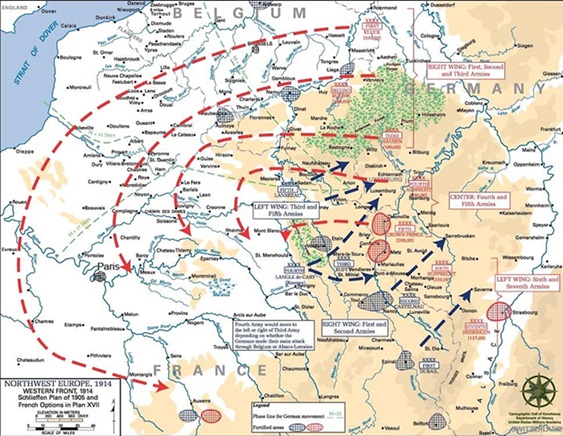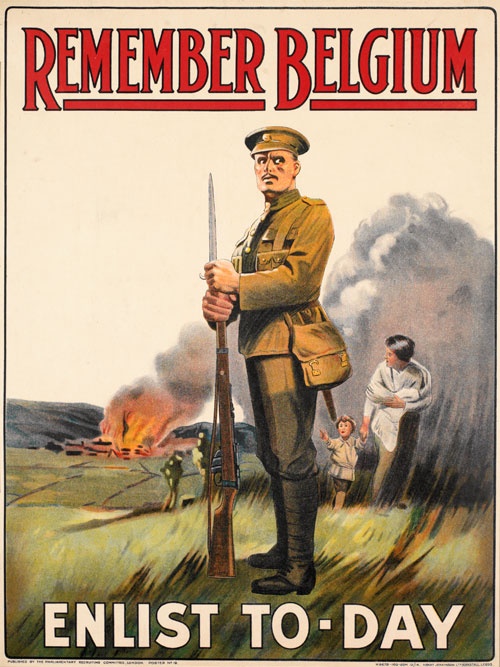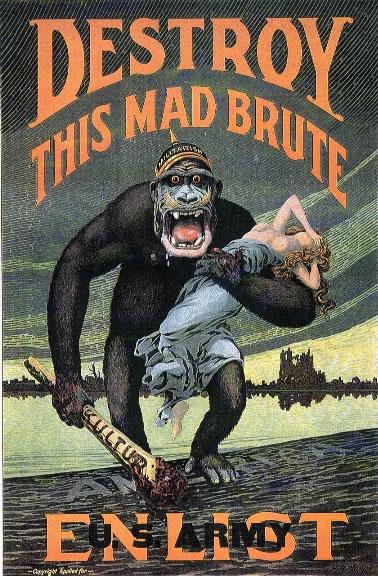|
|
|
|
|
Going DeeperThe following links will help you widen your knowledge: YouTube How the war ended as a stalemate - BBC History file The failure of the Schlieffen Plan - a Mr Allsop History Clip
|
Why did the Schlieffen Plan Fail?
1. Schlieffen PlanUntil 1956, historians believed in the ‘myth’ of the Schlieffen Plan – that it was this detailed ‘Doomsday Plan’ to sweep into France, encircle Paris, and then get across to East Germany to (f)ace the Russians. It was no such thing. It was not a plan but a ‘pitch’ for more money, written in a rush, never tested in a war-game, designed only for a war with France (it advised a defensive war if Germany faced a war on two fronts), which catastrophically misjudged the enemy and was “a military myth requiring everything to go impossibly right to have a real chance of succeeding”. The Germans went into the First World War believing the ‘big talk’ of their over-confident generals, with a war plan that was bound to fail from the start.
|
Source A
A map of the Schlieffen Plan on the Open University site. What impression does it give of the Plan?
|
2. BelgiumThe Germans rolled up to the Belgium border and demanded passage through to France. It should not have been a surprise that the Belgians refused and fought back. It took the Germans eleven days to take Liege (5–16 August), and needed them to bring up their prototype ‘Big Bertha’ 17-inch howitzers to do so. The Belgian army did not collapse, and mounted defences of Namur (20-24 August) and Antwerp (28 September to 9 October). Historians disagree whether the Belgian resistance seriously affected the Schlieffen Plan, with one calling it 'a bump in the road' – but it delayed a time-sensitive advance by 3-4 days.
|
Source B
Britain did not have a military agreement with France and, if Germany had not invaded Belgium, was not required by treaty to have joined the war in August 1914.
|
3. SchrecklichkeitAfter franc-tireurs (resistance fighters) may have fired on them, the German Army began a policy of Schrecklichkeit (frightfulness) against Belgian civilians. At Louvain they burned and looted the town for five days, destroying 2,000 buildings and its medieval library, and executing without trial the mayor, the university rector and every member of the town’s police force. They deported thousands of civilians to work camps in Germany and were responsible for the deaths of nearly 24,000 civilians. 18,000 children were orphaned. This achieved nothing militarily, but it was a propaganda coup for the Allies, who proclaimed it ‘the rape of Belgium’ and even claimed that the Germans had a 'corpse-processing factory' to make soap (not true, btw). These stories encouraged particularly British men to sign up to fight 'little Belgium'.
|
|
4. Britain and the Battle of MonsAgain to the surprise of the Germans, the Schlieffen attack on Belgium drew Britain into the war on 4 August in support of the Belgians, and a BEF force of 80,000 men was quickly transported to the continent. At the battle of Mons (23 August), the BEF encountered the 320,000-strong German First Army, which also had twice as much artillery. They held the first line for six hours, then withdrew in good order over a canal to a second-line position 2 miles to the south, destroying the bridges behind them. The BEF had no machine guns, but their rifle-fire was so concentrated and rapid that the Germans thought they did. The BEF was forced to retreat, however, when the French force to their right did so, exposing them to being outflanked.
|
Source C
Britain did not have a military agreement with France and, if Germany had not invaded Belgium, was not required by treaty to have joined the war in August 1914.
|
5. Exhaustion, supply and communications problemsNearly ¾ million German soldiers were trying to march-and-fight their way through enemy territory at a rate of ten miles a day. The corridor they had to pass through was at points as little as 12 miles wide. Reservist soldiers quickly became exhausted; it is estimated that by the beginning of September the fighting strength of the German First Army – reduced by 20,000 casualties, but also by hunger and tiredness – was perhaps as low as 50%. Supply lines of food and ammunition failed, and the artillery lagged behind the infantry. For long periods also, communication between the three German armies, and between the armies and their commanders, collapsed;
when they did communicate, Canadian historian Holger Herwig found, they acted as
prima donnas, squabbling
|
|
6. Russian invasionOn 17 August, the Russian Army attacked east Germany. German intelligence had known all along that they could do so, but it still came as a surprise to the German commander General Moltke. On 25th August he sent two army corps east to shore up the German Army in the east, depleting his stretched forces in France.
|
|
7. Decision to divertBy the beginning of September, Moltke became aware that the Campaign was not going to achieve its objectives. Historians disagree on who made the decision – Moltke the overall commander, or von Kluck the commander of the First Army – but someone decided to halt the First Army’s advance to encircle Paris, and instead to move eastwards along the north of Paris seeking battle with the French. It was the disastrous decision which caused the German defeat.
|
|
8. Joffre, the French and the battle of the MarneAt the beginning of the war, the French had – as their Plan 17 had planned all along – invaded Alsace, where their armies had been decimated (in the Battle of the Frontiers, 7 August to 6 September). On 24 August, therefore, the French commander Joffre abandoned Plan 17, transferred the First and Second French armies to the Marne to face the Germans, brought up every reservist by taxi, and created a new Sixth Army to defend Paris. The British Secretary of State for War, Lord Kitchener, rushed to France and, in a blazing row, instructed the British Commander-in-the field, Sir John French, that he could not retreat (as French wished), but had to join the French front line. As he swung east, Kluck was surprised to find the new French Sixth Army on his unprotected right flank. On 5th September, the French attacked. French soldiers were ordered not to retreat or be shot. The French General Foch sent the famous message: “My centre is giving way, me right is in retreat. Situation excellent. I shall attack”. During the resultant Battle of the Marne (5-12 September), a gap opened up between the First and Second German Armies, into which the French pushed. That was the end of the Schlieffen Plan. The German Army was defeated and the Germans were forced to retreat.
|
Consider:1. Count the number of times the German seems to have been taken by surprise.
"War Plans do not survive real war and you cannot win a war simply by following a Plan -: a, b, c, d etc., - mainly because as soon as your enemy realises that doing what you expect them to do is losing them the war, they do something different." 2. Discuss the idea that the Schlieffen Plan failed, not because it was too poorly-planned, but because it was over-prescriptive. Which idea do the facts support?
3. Was the Schlieffen Plan 'doomed from the start'?
|
|
Significance of the Schlieffen Plan
1. It suckered the German government into warIt gave the German generals and government an over-confident opinion that the fighting power and spirit of the German Army could win a war against an Entente which was far superior numerically.
|
|
2. It lost Germany the WarIt brought France and Britain into the war and changed a Balkan War into a World War, it exhausted and damaged the amazing German Army, and its inadequacies and failure led to the eventual defeat of Germany.
|
|
3. It discredited GermanyIt showed them as the aggressors, led and ruled by over-confident militarists, the cause of the War, the attackers of a neutral country, and the perpetrators of war crimes in Belgium. The historian Gerhard Ritter in 1956 described it “cataclysmic for German politics”.
|
Consider:"The Schlieffen Plan is important, not in spite of it failing, but BECAUSE it failed." Discuss.
|
4. Contribution to the stalemate?You will see it stated that “the failure of the Schlieffen Plan was the main reason for the stalemate on the Western Front”. I just don’t get this, which seems to me to be akin to saying that January causes February. The Schlieffen Plan did not cause or contribute to the stalemate, but was a victim of the factors that precluded a war of movement. However, it is true that, after the failure of the Schlieffen Plan, the war of movement ended, and both sides dug in for what was to turn out to be a four-year war of attrition.
|
|
5. The Myth of the Schlieffen PlanIt appears that the myth of an annihilating encircling plan may have influenced Nazi military strategies during the Second World War, and – alarmingly – NATO planning against the Soviet Union during the 1950s and 1960s. There are always idiots eager to tell you that ‘we can win a war if we just do it NOW’.
|
|
|
|
|
|
Spotted an error on this page? Broken link? Anything missing? Let me know. |
|




